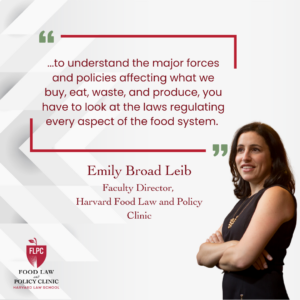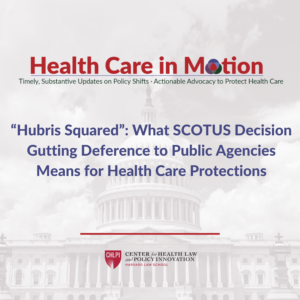Last month, CHLPI attended Families USA’s annual health advocacy conference, Health Action 2017, in Washington D.C. Given the tumultuous path of health policy in today’s world, the conference’s goal was to prepare health care advocates as they seek to defend and bolster progress that has been made since the implementation of the Affordable Care Act. CHLPI brought along student Seán Finan, who is pursuing an L.L.M. from Harvard Law School and working in the Health Law and Policy Clinic to gain insight into the ideas and strategies that health advocates are using to protect access to affordable care. He prepared brief blog posts detailing their perspectives on workshops they attended during the conference.
“I can sign my dog up for Medicare now, right?”
The laugh spread through the room. But there was pain too and a grimace on the face of the health care navigator from Tennessee. “I get consumers coming in to me all the time, saying things like that.” He wasn’t the only one. The room was full of navigators and health care advocates and all of them had heard similar things. In the age of alternative news, fake news, alternative facts and even fake facts, consumers (and advocates) can find it difficult to spot the truth. Other gems included:
“The CHIP program? How can you support having children microchipped?!”
“I heard that signing onto Medicaid will make me a target for deportation”
And the perennial favorite:
“I love the ACA but I’m so glad we’re finally going to repeal Obamacare”.
I was at the “Helping Consumers in a Changing Health Care Policy Landscape” workshop at Health Action 2017. Sheili Quenga, Director of Programs for the Palmetto Project in South Carolina and Doug Goggin-Callahan, Vice-President of Compliance & Regulatory Affairs at Independence Care System were on hand to share strategies for fighting the gush of false information.

The speakers acknowledged that many of these soundbytes are easily dismissed by advocates. Advocates have the knowledge and the experience to sort the crazy ramblings from the serious threats. However, the health care landscape is changing so rapidly that the average consumer finds it very difficult to keep up. When something pops up on their Twitter or Facebook feeds, they may lack the tools to analyse and understand what they’re seeing. This can lead to confusion and panic. The first step in the fight, the speakers emphasized, it is to equip consumers with the tools to “diagnose” what they’re seeing.
First, consumers need to be able to distinguish between the half-baked idea of a lone nut with access to the internet and a serious policy proposal from a credible source. Advocates should try to help consumers understand the hierarchy of health policy. First comes the idea, then the Tweet, then the Facebook post, then the serious opinion. After that comes the considered political position, the policy proposal and the draft bill. Very little that shows up in the first, early stages of debate will make it into a final enacted law, and even when it does, the legislative process can take years. Advocates should try to reassure consumers that yesterday’s tweet will not be tomorrow’s ACA replacement package.
Second, when something that looks like a genuine proposal does come along, consumers need to be able to determine how seriously they should take it. There are a few simple rules of thumb for this. Length is a good one: something that seems too short to have any substance probably doesn’t. The speakers pointed to the Patient Freedom Act of 2017 as an example. The draft bill was proposed by Republican Senators Bill Cassidy and Susan Collins early this year, as a full replacement for the ACA. The ACA was one of the longest and most complicated piece of legislation in Congressional history. It clocked in at almost 1,000 pages. Its implementing regulations were three times that. The Patient Freedom Act comes to a grand total of 73 pages.
Similarly, consumers can look at the predicted time to implementation for a replacement proposal. The ACA was signed into law in 2009 but, because of its complexity, it was scheduled to enter into force gradually, one piece at a time. The last piece didn’t come into force until 2014. Replacing the ACA would require major changes at every level of State and Federal government. A proposal that does not take the magnitude of this task into consideration in its timeline is unlikely to gain traction.
Finally, when evaluating proposals, advocates should be keenly aware of the difference between the “stated intent” of a law and the actual effect. The titles and headlines thrown around can be extremely misleading. The speakers pointed out that despite the headline being one of “patient freedom”, the proposal of Senators Cassidy and Collins focussed primarily on reforming the insurance market from the point of view of the State.
Advocates and consumers alike should to remember that a position is not a policy, much less a law. Careful analysis, patient evaluation and calm in the face of chaos is what we need now, more than ever.


Health Law & Policy, Commentary
Braidwood Management v. Becerra: Updated FAQs for Health Advocates and Providers
July 22, 2024